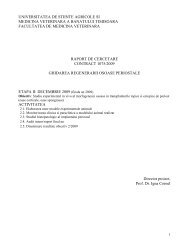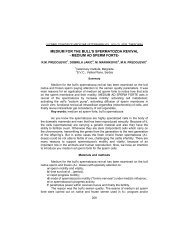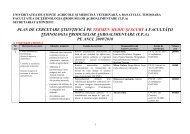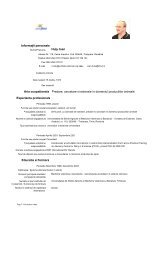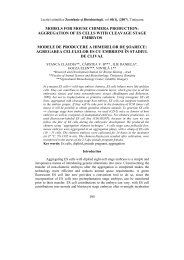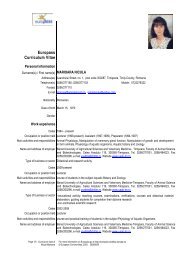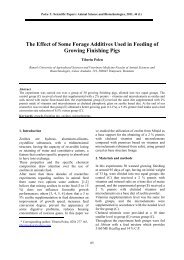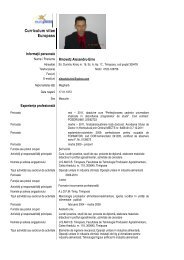Animal Science and Biotechnologies, 2011, 44 (2)
Animal Science and Biotechnologies, 2011, 44 (2)
Animal Science and Biotechnologies, 2011, 44 (2)
You also want an ePaper? Increase the reach of your titles
YUMPU automatically turns print PDFs into web optimized ePapers that Google loves.
Negrea O. et. al./Scientific Papers: <strong>Animal</strong> <strong>Science</strong> <strong>and</strong> <strong>Biotechnologies</strong>, <strong>2011</strong>, <strong>44</strong> (2)<br />
1. Larval anisakiosis incidence is high, with<br />
differing values depending on the species, 60.0%<br />
to 72.2% in mackerel <strong>and</strong> herring, with an average<br />
of 66.6%.<br />
2. Larval parasitism intensity shows different<br />
values depending on species. In mackerel,<br />
dominates low infestations, <strong>44</strong>.4%, followed by<br />
average, 33.3%, <strong>and</strong> then heavy infestations,<br />
22.2%. In herring medium infestations, 46.1%, are<br />
the dominant ,followed by massive infestations<br />
<strong>and</strong> respectively, poor of 30.7% <strong>and</strong> 23.1%.<br />
3. The lesion table caused in gut <strong>and</strong> visceral level<br />
is characterized by intestinal congestion, bleeding<br />
<strong>and</strong> hemorrhagic necrotic enteritis, the presence of<br />
serous cystic larval foci localized on intestinal<br />
serous, kidneys <strong>and</strong> gonads.<br />
4. Morphological investigations carried out by<br />
biometrics on a sample of 20 larvae collected from<br />
herring <strong>and</strong> mackerel, emphasize variables body<br />
size, from 13.0 mm / 0.6 mm to 27.0 mm / 0.6<br />
mm, with an average of 20, 0 mm / 0.5 mm,<br />
comparable to those in the speciality literature.<br />
References<br />
1. Lancrajan, D., Rotaru, O., Analiza Riscurilor<br />
consumului necontrolat al carnurilor, Editura Cetatea<br />
Deva, 2009<br />
2. Munteanu, G., Bogatu, D., Tratat de ihtiopatologie<br />
pag.484 - 490, Editura Excelsior Art., 2003<br />
3. Negrea, O., Bolile pestilor. Editura AcademicPres,<br />
Cuj-Napoca, 2007<br />
4.http://coursdeparasitologie.ifrance.com/Parasites/Ani<br />
sakiase.htmhttp://www.ceirsa.org/allegati/alt_image/im<br />
age_0199.jpg<br />
5. Appleby, D., Kapoor, W., Karpf, M. <strong>and</strong> Williams,<br />
S, Anisakiasis—nematode infestation producing smallbowel<br />
obstruction. Arch. Surg., 1982, 117, 836<br />
6.http://www.scielo.br/img/revistas/bn/v8n2/a10fig01.g<br />
if<br />
7. Otel,V., Constantin, Ghe.,Ghid ihtiopatologic pentru<br />
piscicultura din Delta Dunarii. Buletin de cercetari<br />
piscicole, supliment., Bucuresti, 1989, 11-150<br />
8. Roberts, R. J., Fish Pathology- Second Edition Edit.<br />
Bailliere Tindall Londra, 1989, pp. 1-405<br />
9.http://coursdeparasitologie.ifrance.com/images/Helmi<br />
nthes/Anisakiase/Anisakis%20granulome<br />
39



